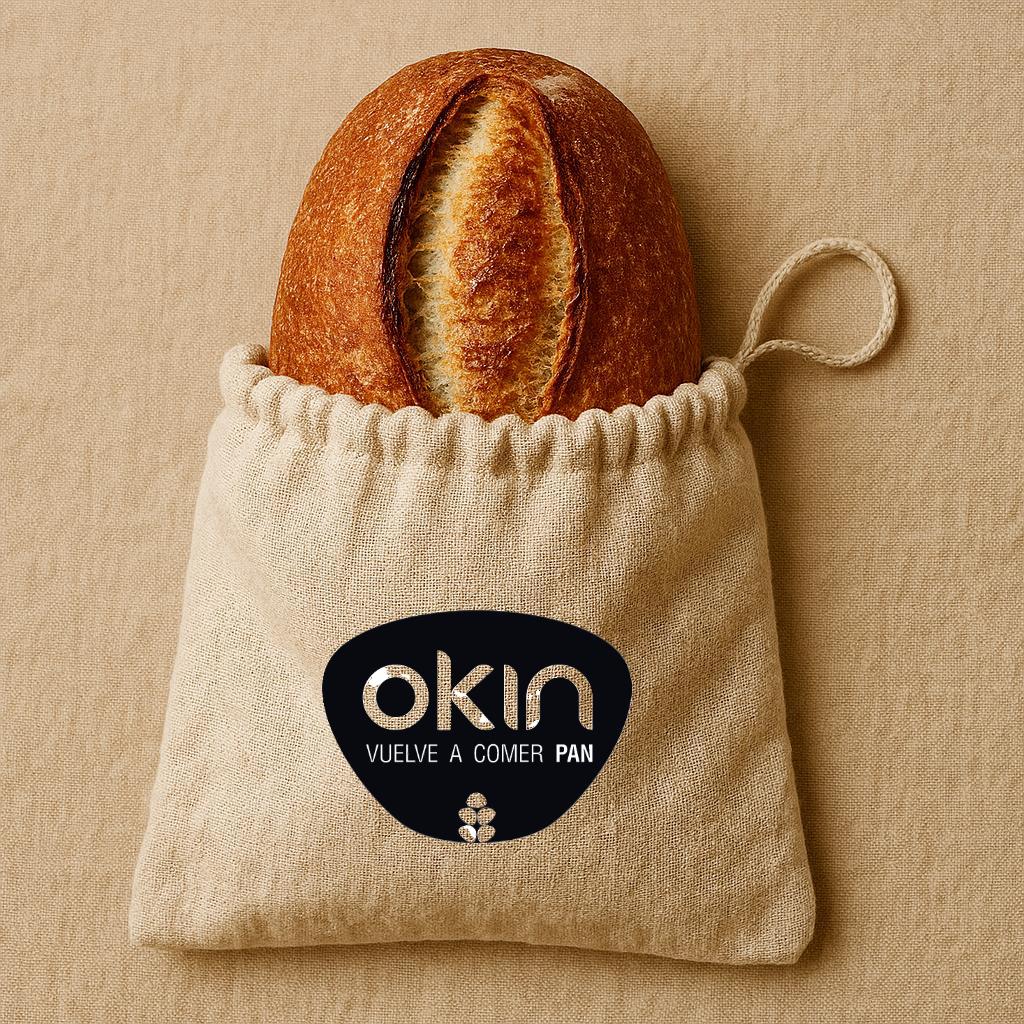19.08.2025
How to keep bread fresh for longer?

Keep bread fresh for longer with these practical tips, avoid it from going stale, and learn how to properly store each type of bread.
From a biochemical perspective, when bread is baked, the starch gelatinizes and absorbs water, giving it a soft texture. However, as time passes, bread begins to dry out due to moisture loss: the water in the crumb and crust gradually evaporates into the air, accelerating the overall hardening of the bread. This is a natural process that is intensified in dry environments or areas with air currents.
At the same time, starch chains reorganize and release more water, causing the crumb to harden in a phenomenon known as retrogradation. This physical change is common to all types of bread, although it can be slowed down with proper storage techniques, such as using cloth bags or airtight containers.
Besides hardening, bread can also turn rancid due to the oxidation of the fats present in the crumb or crust. This phenomenon, known as rancidity, alters the original aroma and flavor, even if the texture seems intact. Storing bread away from direct light and in proper containers helps delay this process and preserve its qualities.
How to store bread?
There are several simple strategies you can use to extend your bread’s freshness. Choosing the right method depends both on the type of bread and your home’s storage conditions. For example, where you keep your bread makes a big difference: the pantry, fridge, or even freezer provide different results. In addition, using cloth bags, paper, or airtight containers can help prevent bread from losing too much moisture or becoming soggy due to condensation. By paying attention to these details and avoiding common mistakes, you can enjoy tasty, soft bread for much longer.
Homemade tricks to prevent bread from going stale
To choose the best method, it’s also important to consider your local climate and humidity, since these factors can accelerate drying or mold growth. Likewise, slicing only what you need each time you eat it helps keep the inside fresher, since exposure to air is minimized.
For those who want to store specialty breads, such as those with seeds or nuts, it’s even more important to use clean, dry containers and avoid sealed plastic bags that can trap moisture. The key is finding the right balance between ventilation and protection from external factors so bread keeps its authentic aroma and flavor as long as possible.
How long does each type of bread last?
- Store bread in a cool, dry place, preferably inside a cloth or paper bag that allows airflow and prevents moisture buildup.
- Eat within 2–3 days, or freeze in small portions to preserve freshness and flavor for weeks.
- Avoid slicing the whole loaf before storing; instead, cut only what you’ll eat and keep the rest intact to preserve internal moisture.
- Reheat hardened bread in the oven for a few minutes at low temperature to recover some softness.
Moreover, how long bread lasts depends largely on its type. Higher-hydration breads, like rustic loaves, ciabatta, or those made with sourdough, tend to stay fresh longer thanks to their water content, which delays crumb hardening. Considering hydration and specific ingredients of each bread variety is essential to choosing the best storage method and enjoying optimal texture for more days.
Storing white bread
For white bread, the best option is to keep it wrapped in a cloth bag or in a wooden bread box, which allows airflow and prevents mold growth. If it becomes slightly hard, you can wrap it in a damp cloth and warm it in the oven for a few minutes to restore its texture. Always avoid sealed plastic bags, as they trap moisture and speed up spoilage. Also, do not refrigerate white bread, since the cold makes it dry out faster.
Storing whole wheat bread
Whole wheat bread, which usually has more moisture and natural oils from grains, must be protected from prolonged exposure to air to prevent oxidation and staling. The best option is to wrap it in cotton cloth or paper, never plastic, and store it in ventilated containers away from direct heat. Whole wheat breads can last fresh for 3–5 days if cared for properly and sliced only as needed. To extend shelf life further, you can freeze portions and thaw them at room temperature, enjoying almost the same flavor and texture as freshly baked.
Is it recommended to freeze bread?
Freezing bread is an excellent option to keep it fresh longer without losing quality, as long as some practical tips are followed. Ideally, wait until bread is completely cool before placing it in the freezer to avoid condensation inside the bag or container that could make it rubbery. Divide the bread into portions or slices so you only thaw what you need and avoid waste.
Use special freezer bags or wrap bread in aluminum foil before freezing. This way, moisture and flavor are better preserved. To thaw, simply leave at room temperature for a few hours or place in the oven for a few minutes to restore freshness and a crispy crust.
Common mistakes when storing bread and how to avoid them
Some common mistakes directly affect bread freshness and flavor. One of the most frequent is storing bread in sealed plastic bags, which causes moisture buildup and promotes mold or an unappealing soggy texture. Another mistake is leaving bread uncovered, which accelerates drying and staling. Refrigerating bread, especially white bread, is usually counterproductive, since cold alters the crumb structure and speeds up drying. It’s also not advisable to slice the entire loaf in advance, since each cut increases exposure to air and shortens shelf life.
Do you need frozen bread for your business? We can help!
At OKIN, we use a controlled-temperature freezing system that fully respects the product, without using additives or preservatives. This process ensures that our breads maintain their original freshness, flavor, and texture, so that once defrosted, they taste just like freshly baked.
Discover here our variety of breads and find the perfect one for you!









